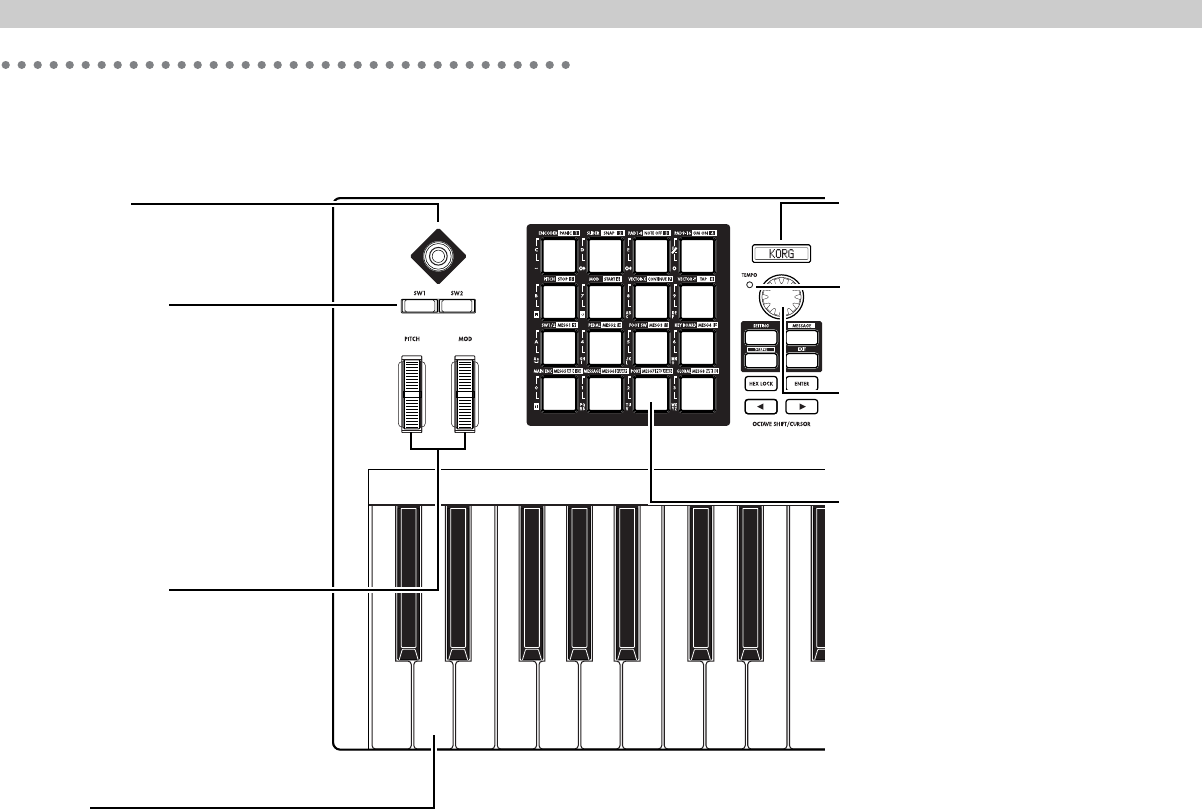
Introduction–Parts and what they do
2
Parts and what they do
Front panel
Vector joystick
You can assign separate control change
messages to the up/down and left/right (X
and Y) axes.
Switch 1, Switch 2
You can use these switches in either the
one-parameter (Inc/Dec type) or two-
parameter (SW × 2) mode.
• One-parameter mode assigns a single
control change or program change to
both switches, allowing the value to be
increased or decreased by SW1 and SW2.
•Two-parameter mode lets you assign
completely separate messages (damper,
sostenuto, soft pedal, portamento, or
other control change) to SW1 and SW2.
Bend/Mod Wheels
You can assign MIDI messages to these
wheels and use them to control a connected
device or an application on your computer.
• BEND can be assigned to pitch bend,
master balance, aftertouch, velocity, or a
control change.
• MOD WHEEL can be assigned to
aftertouch, velocity, or a control change.
Keyboard
This is a full-size 49-key velocity-sensitive
keyboard. It transmits note messages.
Main display
In each mode this displays the scene name,
page, parameters, and other information.
TEMPO LED
The TEMPO LED blinks every quarter-note,
according to the MIDI Clock tempo specified
by the main encoder.
Main encoder
In Play mode you can use this to adjust the MIDI
Clock tempo or to transmit program changes. In
other modes this is used to edit parameters.
Trigger pads
You can assign control changes or note
messages (C-1–G9) to the trigger pads.
When assigning a control change, you can
choose to transmit a value of 127 when the pad
is pressed and 0 when released, or alternately
transmit values of 0 and 127 each time the pad
is pressed.
When assigning a note message, you can
specify whether a note-on (with velocity) will
be transmitted when the pad is pressed and a
note-off when released, or alternately transmit
both note-on and note-off messages each time
the pad is pressed.
In other modes, you can use the trigger pads to
select pages, to input numerical values, or
perform various other functions depending on
the mode. (☞p.4 “About the trigger pad
functions”)


















